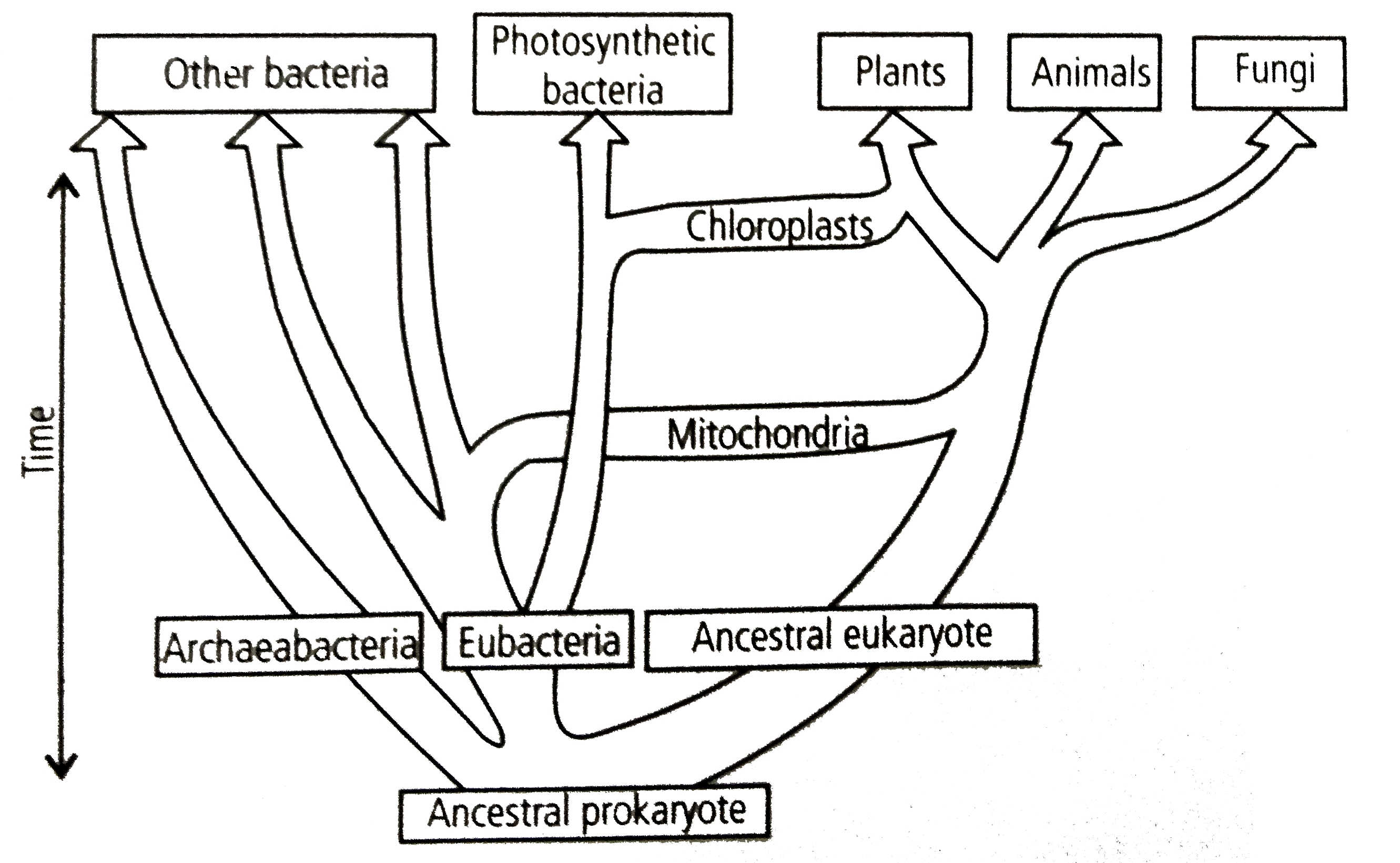Which similarity is found between chloroplast and mitochondria ?
Both the semi-autonomous contain double stranded circular DNA an double membrane bound
Both are autonomous organelle
Both are single membrane bounded
Both contains 80S type of ribosome
The correct Answer is:A
To answer the question "Which similarity is found between chloroplast and mitochondria?", we can break down the similarities step by step.
1. Identify the Organelles:
- Chloroplasts and mitochondria are both organelles found in eukaryotic cells.
2. Structure:
- Both chloroplasts and mitochondria have a double membrane structure. This means they are surrounded by two lipid bilayers.
3. Genetic Material:
- Both organelles contain their own DNA, which is double-stranded and circular. This is similar to the DNA found in prokaryotic cells.
4. Ribosomes:
- Both chloroplasts and mitochondria contain ribosomes that are similar to prokaryotic ribosomes, specifically 70S ribosomes, which are different from the 80S ribosomes found in the cytoplasm of eukaryotic cells.
5. Semi-Autonomous Nature:
- Both organelles are considered semi-autonomous. This means they can replicate independently of the cell cycle, but they still rely on the cell for some functions and materials.
6. Function:
- While they have different primary functions (chloroplasts are involved in photosynthesis, and mitochondria are involved in ATP production), they both play crucial roles in energy metabolism within the cell.
Conclusion:
The similarities between chloroplasts and mitochondria include:
- Both have a double membrane structure.
- Both contain double-stranded circular DNA.
- Both have 70S type ribosomes.
- Both are semi-autonomous organelles.
- Chloroplasts and mitochondria are both organelles found in eukaryotic cells.
- Both chloroplasts and mitochondria have a double membrane structure. This means they are surrounded by two lipid bilayers.
- Both organelles contain their own DNA, which is double-stranded and circular. This is similar to the DNA found in prokaryotic cells.
- Both chloroplasts and mitochondria contain ribosomes that are similar to prokaryotic ribosomes, specifically 70S ribosomes, which are different from the 80S ribosomes found in the cytoplasm of eukaryotic cells.
- Both organelles are considered semi-autonomous. This means they can replicate independently of the cell cycle, but they still rely on the cell for some functions and materials.
- While they have different primary functions (chloroplasts are involved in photosynthesis, and mitochondria are involved in ATP production), they both play crucial roles in energy metabolism within the cell.
The similarities between chloroplasts and mitochondria include:
- Both have a double membrane structure.
- Both contain double-stranded circular DNA.
- Both have 70S type ribosomes.
- Both are semi-autonomous organelles.
Topper's Solved these Questions
- BIOLOGY AT A GLANCEBOOK - ALLENCHAPTER - BIOLOGY AT A GLANCEEXERCISE - Plant physiology
64 Videos
- BIOLOGY AT A GLANCEBOOK - ALLENCHAPTER - BIOLOGY AT A GLANCEEXERCISE - Reproduction In Plants
25 Videos
- BIOLOGY AT A GLANCEBOOK - ALLENCHAPTER - BIOLOGY AT A GLANCEEXERCISE - Biomolecule
29 Videos
- BIODIVERSITY AND CONSERVATIONBOOK - ALLENCHAPTER - BIODIVERSITY AND CONSERVATIONEXERCISE - S
18 Videos
- BIOLOGY AT A GLANCE (ZOOLOGY )BOOK - ALLENCHAPTER - BIOLOGY AT A GLANCE (ZOOLOGY )EXERCISE - EXERCISE
207 Videos
Similar Questions
Knowledge Check
Given diagram illustrates an evolutionary tree.

Which of the following statements can be deduced from the given evolutionary tree?
(i) The ancestral eukaryotes were anaerobic.
(ii) All eukaryotes were anaerobic.
(ii) All eukaryotes possess mitochondria.
(iii) Eubacteria and Eukaryota have a common ancestor whereas Archebacteria have a unique and independent origin.
(iv) Mitochondria and chloroplasts have similar genomes.
(v) Mitochondria are presents in plants, animals and fungi.
(vi) chloroplasts and mitochondria arose asendosymbionts.
(vii) Fungi and animals lost chloroplasts during evolution.Aiii,v and viBi,v and viCii,iii,iv and vDi,v,vi and vii
Write the structural similarities of chloroplasts and mitochondria.
View SolutionCommon organic acids found in both Chloroplast and mitochondria in C4 plants are
View SolutionWhich one is common in nucleus, chloroplast adn mitochondria ?
View SolutionWhich of following is not common in chloroplasts & mitochondria ?
View SolutionThe chemiosmotic theory of ATP synthesis in the chloroplast and mitochondria is based on
View SolutionChemiosmotic theory of ATP synthesis in the chloroplasts and mitochondria is based on
(a) Proton gradient
(b) Accumulation of K+ ions
(c) Accumulation of Na+ ions
(d) Membrane potential
View SolutionWhich one is common amongst nucleus , chloroplast and mitochondria ?
View Solution
